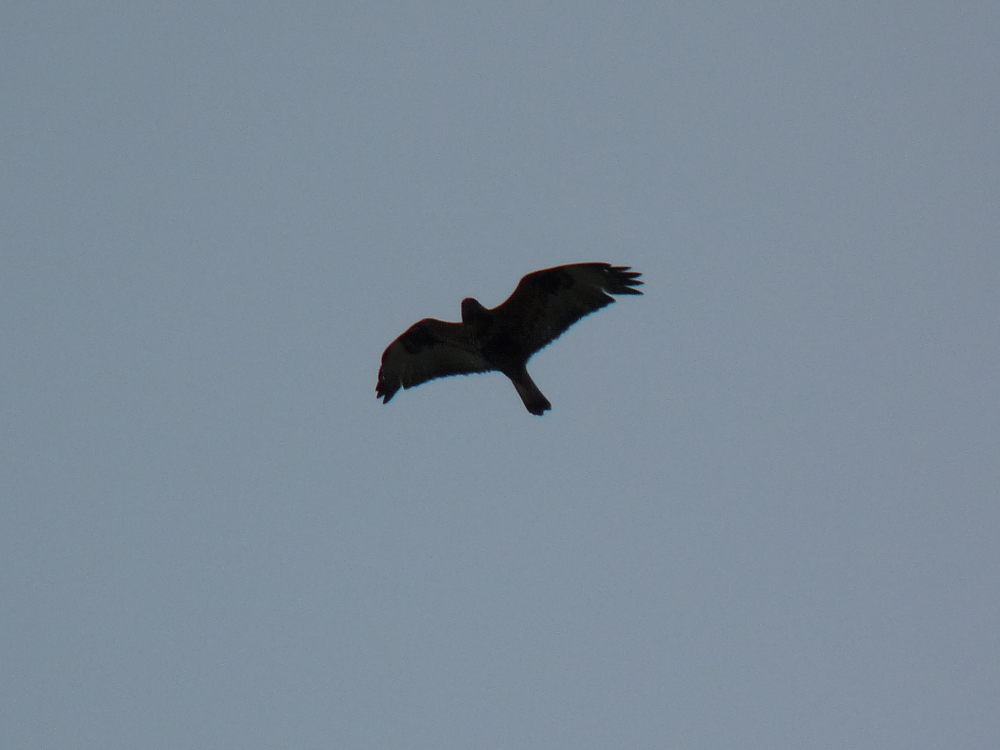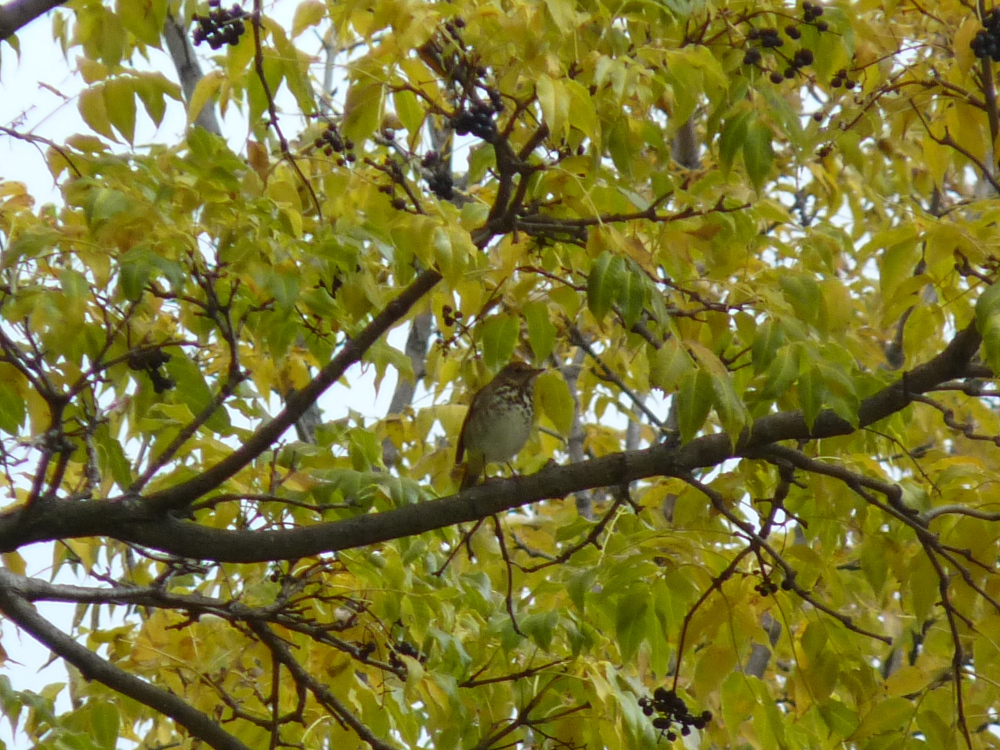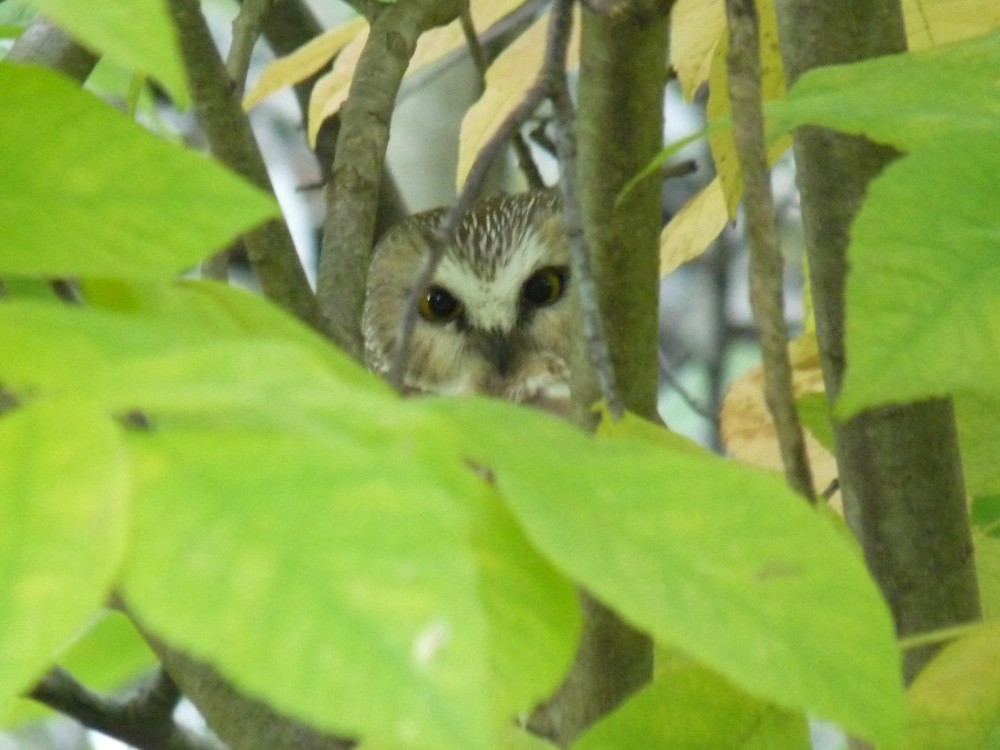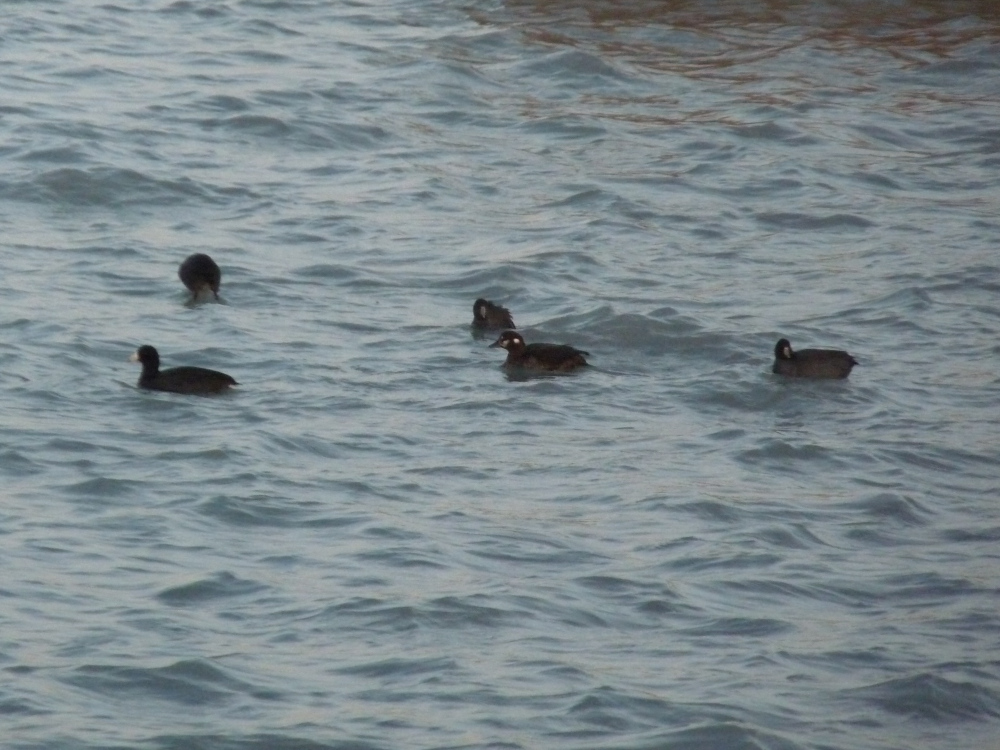Two Rough-legged Hawks flew over Montrose on November 9. What’s interesting is that conditions weren’t favorable for hawk migration – overcast skies, light rain, and breezy south winds. Montrose is known for many things birdwise but we don’t do well with migrating buteos. Reasons for this discrepancy could be a lack of birders looking up for hawks and our proximity to Lake Michigan, which may scare away migrating buteos. Rough-legged Hawks aren’t intimidated by large bodies of water, which, oddly, may be the reason why we see more of them in active migration than other buteos, though they’re still rare.
Category Archives: Fall Bird Reports
Something Different – The Amur Cork Tree
One of the benefits of birding is that it touches so many other disciplines – you end up learning something about botany, entomology, weather, even physics. Montrose hosts an impressive variety of trees, including an exotic Asian species known as the Amur Cork Tree. Most naturalists don’t think highly of non-native plants because of the adverse effects they can have on the environment. One redeeming quality of the Amur Cork Tree is that it produces large amounts of juicy berries that fruit eating birds like American Robins and Hermit Thrushes love. The photo shows one of the Cork Trees from Montrose. Note the clusters of dark berries and the Hermit Thrush about to eat them.
The next time you’re at Montrose, practice your tree identification skills and see if you can find our Amur Cork Trees.
Northern Saw-whet Owl, October 20, 2022
There isn’t a much more rewarding experience than finding a roosting Northern Saw-whet Owl during migration. This one was as fascinated with me as I was with it. Shoutout to the Northern Cardinal and Black-capped Chickadees for getting me on it. The secret to discovery in nature is awareness of the signs, cues, and messages it presents.
Tip: Listen for scolding Black-capped Chickadees and other small songbirds. They’re good at locating roosting owls in dense vegetation. If you hear complaining songbirds, look around and you might find a Saw-whet.
Note: Disclosing the exact location of a roosting owl is frowned upon in the birding community. Doing so could lead to harassment of the owl by birders and photographers. Giving the general location is acceptable, but if you find a roosting owl you should keep the precise location to yourself.
Harlequin Duck, October 21, 2022
The female type Harlequin Duck seen at Foster Avenue a couple days ago wandered over to Montrose on October 21 (Foster Avenue is about a mile from Montrose). The bird hung out with the American Coots that have taken up residence at the east end of the beach and inside the fishing pier. It didn’t stay long and flew back west after a few minutes. Maybe it didn’t like keeping company with the pedestrian coots. Harlequin Ducks are rare but regular visitors to the inshore waters of Lake Michigan in late fall, winter, and early spring. This sighting is a reminder that waterfowl season is here and you should start checking Lake Michigan for scoters and other ducks.
Weather and Birding Forecast, October 13 and 14
A strong cold front will pass through northern Illinois late in the day on October 12. The backside winds will be from the west on October 13 and 14. These conditions are favorable for several birds at Montrose, including Franklin’s Gulls, Short-eared Owls, and possibly American Avocets and Smith’s Longspurs. We should also see an influx of typical mid October passerines.
Warblers Down Low
Look at the Magnolia Warbler in the accompanying photo. Magnolia Warblers are normally found in trees but cold weather can force them to look for insect prey on the ground. This isn’t unusual – birds have to find food where they can and will adjust their behavior accordingly. The temperature on October 9, 2022, when I took this photo, was in the 50s and it was windy. These conditions reduce insect activity and make life more challenging for insect dependent birds like most warblers. The Magnolia Warbler wasn’t alone on that day. Numbers of hungry Yellow-rumped Warblers and Golden-crowned Kinglets were also down low, busily looking for food. Some of the Yellow-rumpeds were even feeding on the sand in the Dunes.






